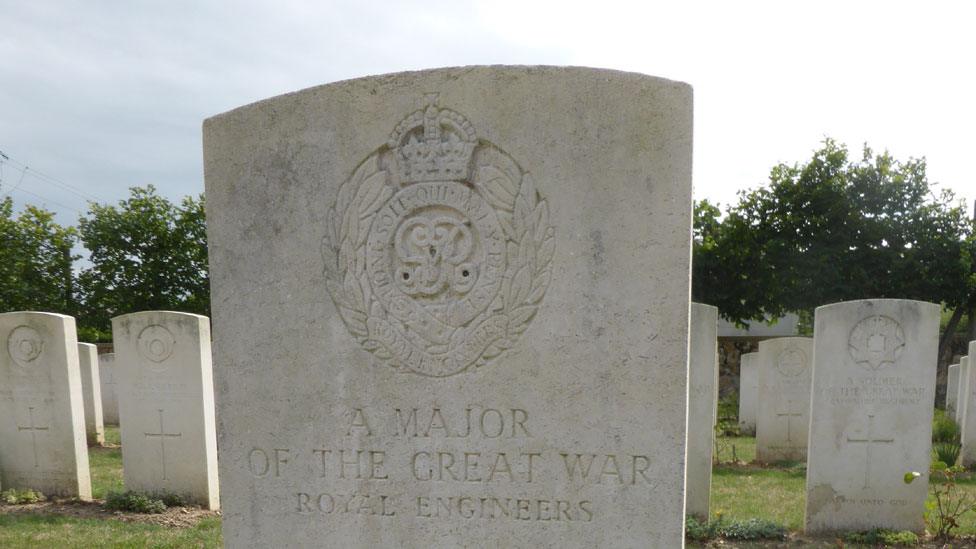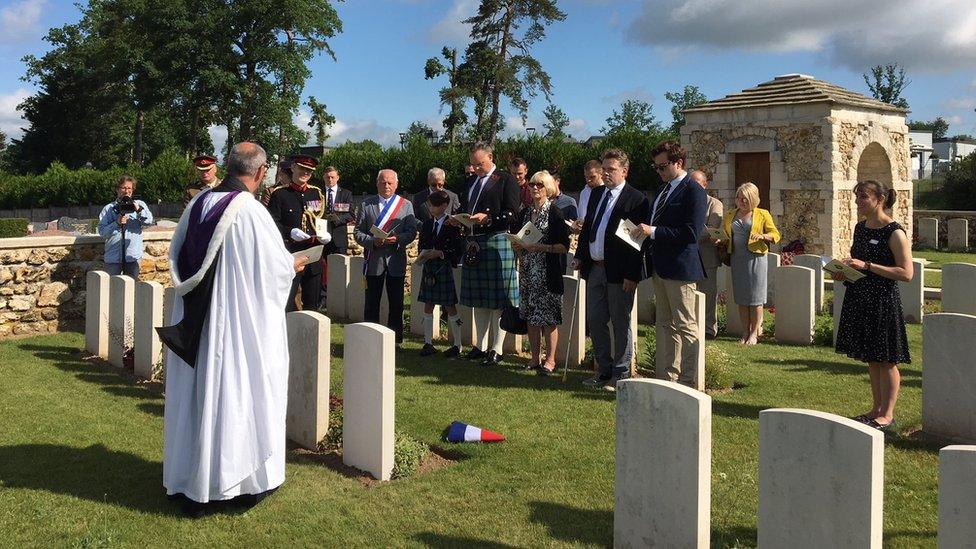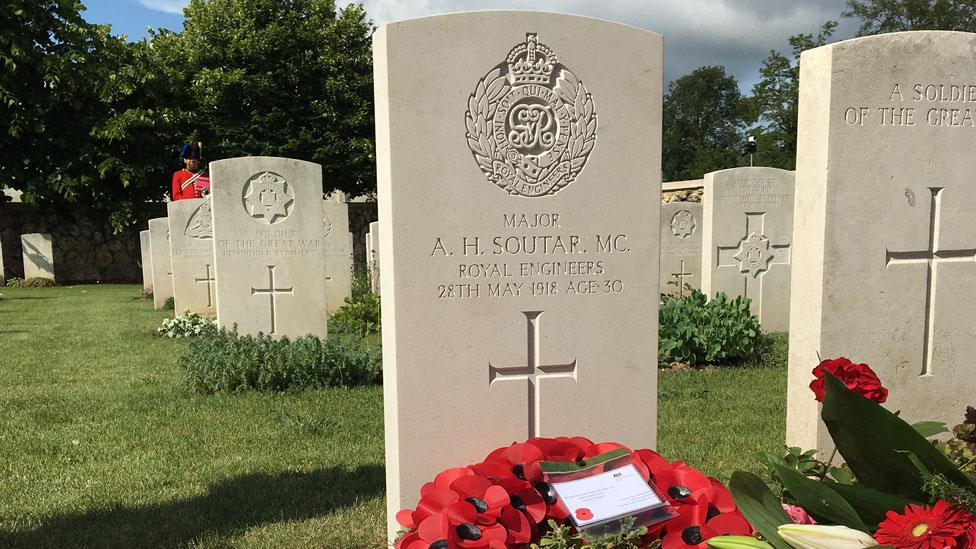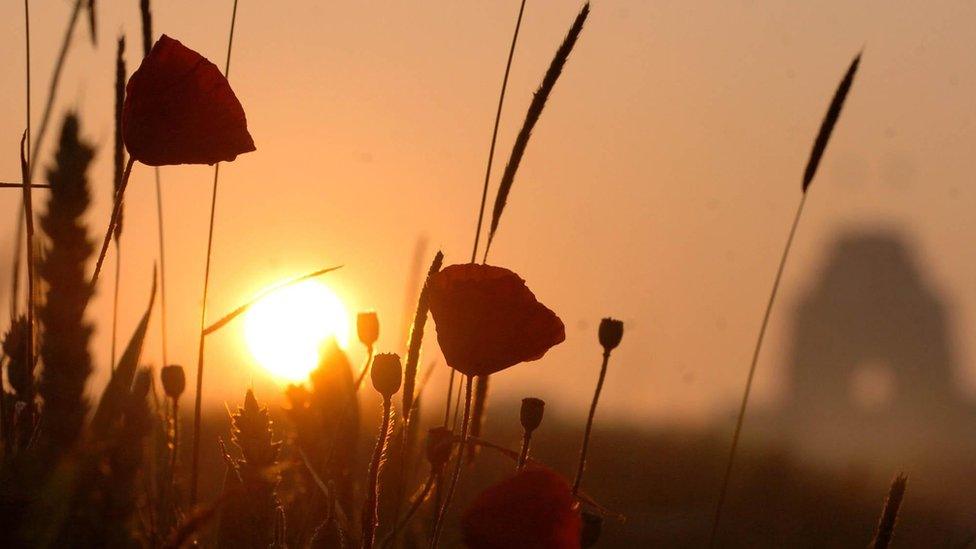World War One unknown soldier found to be Scottish major
- Published
Major Alexander Soutar fought at the Somme and Passchendale before being shot and killed by a sniper
A World War One grave in France marked as that of an unknown soldier has been identified as the resting place of an army officer from Scotland.
The headstone at Jonchery-Sur-Vesle, near Reims, was dedicated only to "a major" of the Royal Engineers.
Detective work by David Tattersfield, of the Western Front Association, identified the major to be an Alexander Soutar, a minister's son.
Maj Soutar was born in Cullen and grew up in Glasgow and Thurso.
He fought at the Somme in 1916 and Passchendale in 1917, before being shot and killed by a sniper on 28 May 1918 while helping to defend the village of Hermonville, near Jonchery-Sur-Vesle, from an attack by German soldiers.
One hundred years after his death, Maj Soutar's descendants have gathered at the Commonwealth War Graves Commission Cemetery where he lies to honour him.
A new headstone with his name has been erected.
The soldier's great nephew, James Soutar, said: "My great uncle died exactly 100 years ago and nobody knew where his final resting place was.
"It's great for us to come and see his final resting place. I think his soul feels happy that his family is with him again."
Mr Soutar, who named his son after his great uncle, said he and his family were grateful to Mr Tattersfield.
Mr Tattersfield began his investigation following a visit to the cemetery, a place he describes as small, rarely visited but well cared for.

Maj Soutar's headstone before it was replaced with a new one with his name
Intrigued by the grave to an unknown Royal Engineers major, Mr Tattersfield checked the Commonwealth War Graves Commission database.
He knew that British troops had only been in the area of France where he found the grave for a short period of time in 1918.
Of more than 70 Royal Engineers killed across France at the end of May and early June 1918, Mr Tattersfield found two men who had held the rank of major.

Maj Soutar's family and army personnel at his grave on Wednesday

Maj Soutar's new headstone
One of the majors was buried near Boulogne and the other, Maj Alexander Henderson Soutar, MC, had been killed on 28 May 1918, and was commemorated on the Soissons Memorial, near the cemetery in Jonchery-Sur-Vesle.
With this information, the Ministry of Defence assisted in tracing the Scottish officer's relatives.
From them, and also the official war diary of the company Maj Soutar served with, Mr Tattersfield was able glean more information on the soldier's life before and during the war.
Maj Soutar was the eldest of six children and, though christened Alexander, was known by his family and friends as Alastair.
The siblings' parents were Mary and Alexander, a United Free Church minister.

Poppies at The Somme where Maj Soutar saw action in 1916
During World War One, Maj Soutar's brother, Frank, was killed while serving in Mesopotamia with the 2nd Black Watch.
Another brother, David, was a prisoner of war and survived the conflict.
A letter from a friend to Maj Soutar's parents tells of him being shot and killed as he raised his rifle while defending Hermonville, where British soldiers were billeted.
The friend described the officer as a man "admired immensely" by all who knew him.
Following the fighting in which Maj Soutar was killed it is thought that there was enough to distinguish his rank, but nothing more of his identity.
This led to him being buried in an unmarked grave.